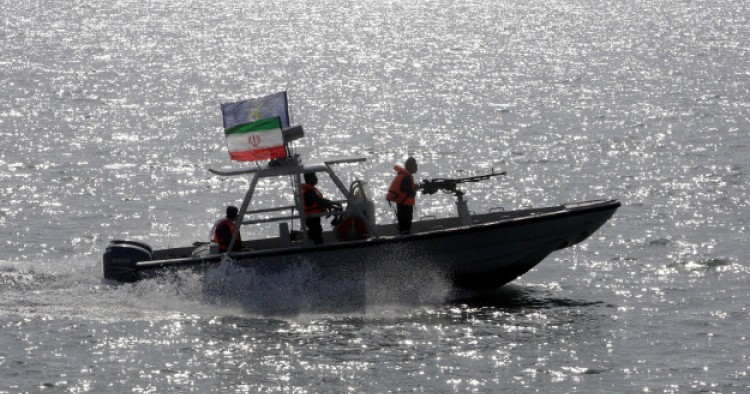Earlier today, the U.S. and four other allied naval forces started a three-day maritime exercise in international waters close to the Iranian coastline. The joint drill – Unified Trident – comes at a time when tension between Washington and Tehran is escalating over the latter’s latest ballistic missile test as well as the Trump administration’s decision to ban visas for the citizens of Iran and six other Muslim-majority countries. Recently, Iranian and U.S. naval forces have also had tense relations in the Gulf region.
It was therefore no surprise that the U.K.-led military exercise prompted a warning by the Iranian military. “Anyone that intends to conduct an exercise within the Persian Gulf and the Gulf of Oman doesn’t dare to enter our country’s waters,” said Iran’s Navy Commander Habibollah Sayyari. According to Tasnim News Agency, an outlet affiliated with the Islamic Revolution Guards Corps (I.R.G.C.), Sayyari also announced that Iran will carry out a “massive” exercise, Velayat-e 95, within 2,000 kilometers from Chabahar Port and in international waters by the end of March to “exhibit the Islamic Republic’s power.”
U.S. Navy officials, however, emphasized that allied forces had no intention to enter Iranian waters. "This exercise is not directed toward any nation, but will demonstrate a combined commitment to an enduring presence and to regional stability," U.S. Naval Forces Central Command spokesman Lt. Rick Chernitzer told Military.com in a statement. "Unified Trident will be conducted in accordance with international maritime laws, standards and norms."
Over the past year, Iran’s naval forces, particularly the I.R.G.C. Navy, have repeatedly harassed and provoked U.S. naval forces in the Gulf region. Earlier this month, the U.S.S. Mahan fired warning shots at five Iranian vessels who were approaching the destroyer and two other US ships at high speed. When the I.R.G.C. boats disregarded the warnings and repeated requests to slow down, a U.S. helicopter began to drop smoke grenades to deter the Iranian boats. Last year, the U.S. Navy had a total of 35 encounters with the Iranian naval forces. The most high-profile incident occurred in January 2016 when Iran briefly captured 10 U.S. sailors in the Gulf.
During the election campaign last September, Donald Trump said that he would order any Iranian boats that made improper “gestures” in the Gulf to be “shot out of the water.” If Iran’s latest ballistic missile test just days after Donald Trump took office is any indication, I.R.G.C. naval forces will most likely test the new U.S. administration’s resolve and patience in the future.
The Middle East Institute (MEI) is an independent, non-partisan, non-for-profit, educational organization. It does not engage in advocacy and its scholars’ opinions are their own. MEI welcomes financial donations, but retains sole editorial control over its work and its publications reflect only the authors’ views. For a listing of MEI donors, please click here.













